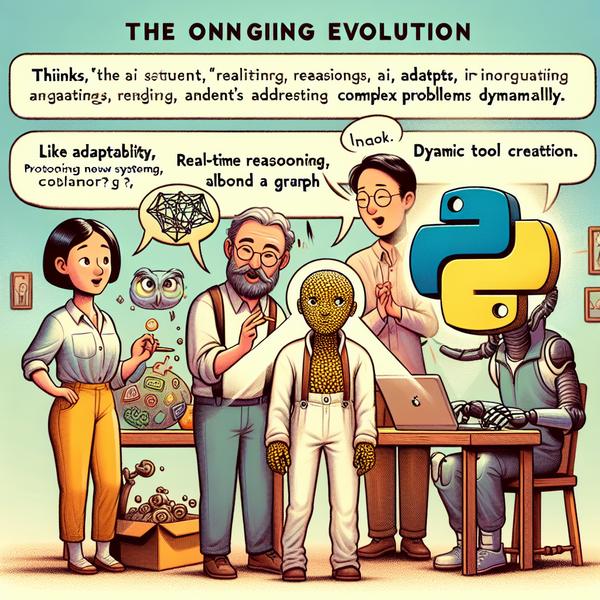
Artificial Intelligence continues to evolve, tackling challenges that previously seemed insurmountable. One remarkable new development is PyVision, a groundbreaking Python-centric framework designed for AI to create and execute tools as it "thinks." This system isn't just about recognizing patterns; it's about reasoning, adapting, and solving complex problems dynamically. From visual puzzles to data-heavy diagnostic interpretations, PyVision showcases how AI is becoming more versatile and autonomous in real-world applications. Let’s explore its incredible features and how it aids in visual reasoning.
How PyVision Addresses Limitations of Traditional AI Models
- Traditional AI models often function using fixed toolsets and single-task processes, making them rigid and unable to adapt to unique challenges.
- Imagine building the same puzzle repeatedly but being unable to create new pieces when the puzzle type changes. This is a limitation common to models like Visual ChatGPT or HuggingGPT, which depend on preset workflows.
- PyVision shines by enabling adaptability. It uses Python, allowing AI models to build customized solutions dynamically, whether for image recognition or symbolic reasoning.
- For example, in a classroom setting, PyVision could assist a student not only in reading a graph but also in explaining its insights in real-time, adjusting its approach along the way.
Dynamic Tool Creation: An AI Game-Changer
- PyVision is like a toolbox where new tools can be created on the fly, enabling dynamic responses to problems.
- It starts by receiving a user query and visual input. From there, it generates Python code, processes the data, and iterates improvements based on feedback.
- If AI were tasked with evaluating a medical scan, PyVision could dynamically create image segmentation tools and statistical solutions using OpenCV and NumPy to ensure accurate results.
- This ability to refine and rework steps aligns PyVision closer to how humans tackle complex problems—breaking them down and adapting when necessary.
Quantifiable Improvements with Python-Based Reasoning
- Quantitative benchmarks show PyVision significantly boosts performance, improving GPT-4.1's visual search benchmark accuracy from 68.1% to 75.9%, and Claude-4.0-Sonnet's reasoning accuracy from 48.1% to 79.2%.
- These improvements aren't just numbers. For instance, imagine an architect using AI to solve visual puzzles for designing 3D spaces. By dynamically creating necessary tools, PyVision ensures improved efficiency and accuracy.
- Its multi-turn ability keeps variable states intact, meaning PyVision can link tasks instead of resetting context, further amplifying efficiency.
- Unlike manual coding or static tasks, PyVision dynamically evolves with the complexity of the mission, highlighting its advantages in analytical domains.
Safety and Structure in AI Tool Execution
- Safety is a core concern for such an advanced system, and PyVision incorporates features like process isolation and structured I/O.
- This ensures that external interferences or errors don't compromise the operation, especially during high-stakes processes like medical diagnostics.
- For example, consider an industrial factory using AI for visual inspections of its assembly lines. PyVision ensures robust and accurate visual enhancements without disrupting other systems.
- Its usage of libraries like Pillow and codes in a secure, reverent environment ensures PyVision not only innovates but also remains highly reliable when stakes are high.
Why PyVision is the Future of Adaptive AI
- By bridging perception and reasoning, PyVision challenges the traditional notions of AI simply recognizing patterns.
- It transforms tools into agents capable of iterative problem-solving, empowering industries like education, healthcare, and even game development.
- Just as humans change strategies based on feedback in real life, this framework allows machines to take that adaptive leap for challenges like visual reasoning puzzles or symbolic interpretations.
- Think about PyVision guiding a team of researchers to analyze complex satellite images, making adjustments on-the-fly, saving both time and resources—this is adaptive, efficient AI at its best.